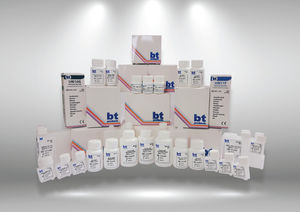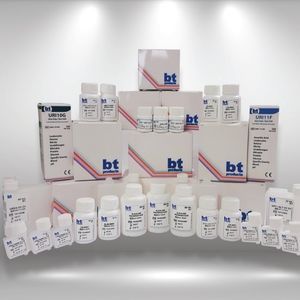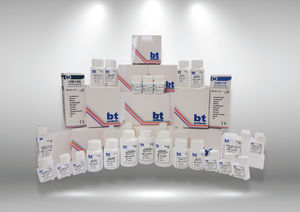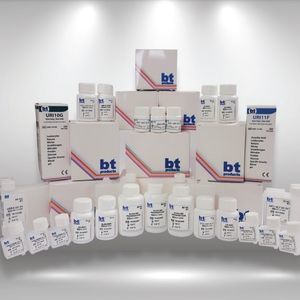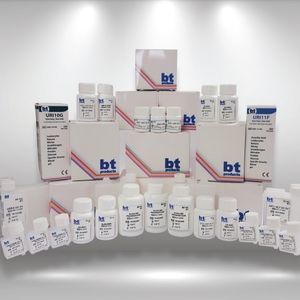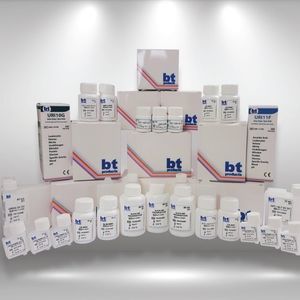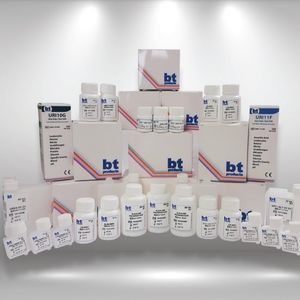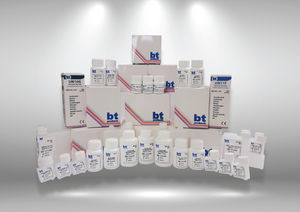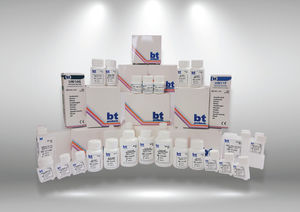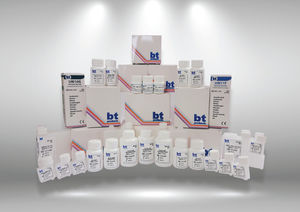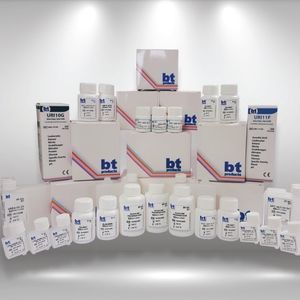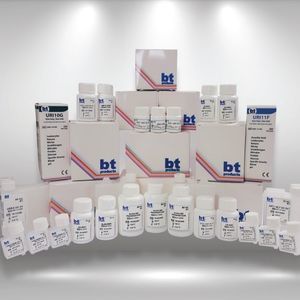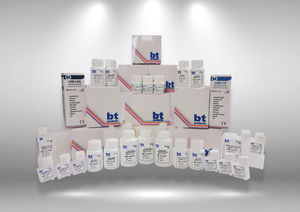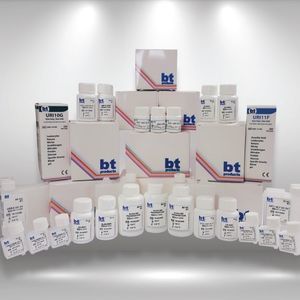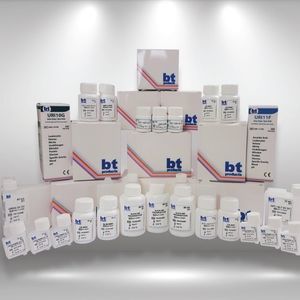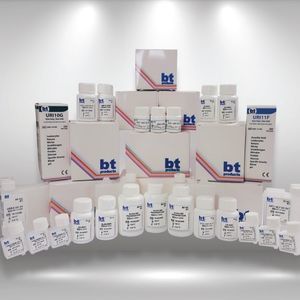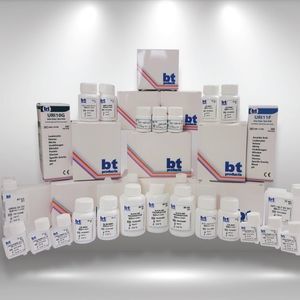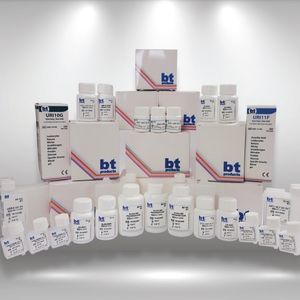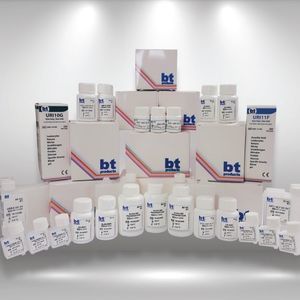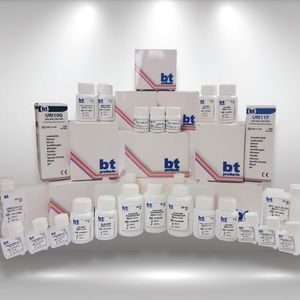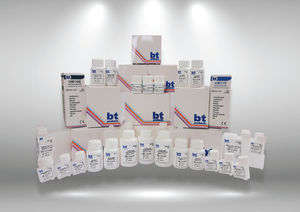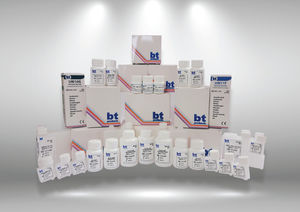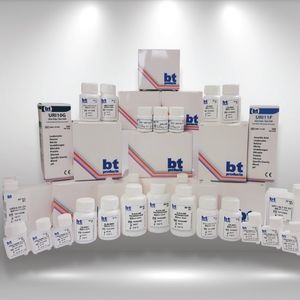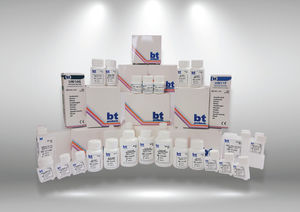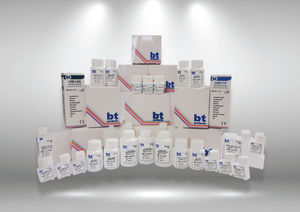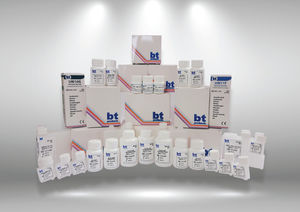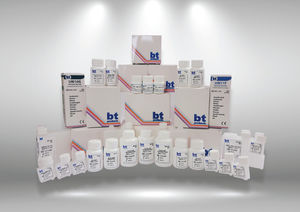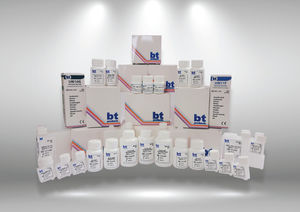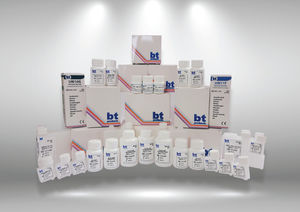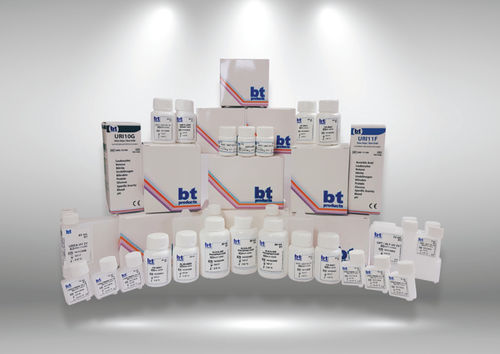
- Laboratory
- Laboratory medicine
- Solution reagent
- BILIMSEL TIBBI ÜRÜNLER
Urea reagent kit URE-11 seriessolutiondiagnosticfor biochemistry
Add to favorites
Compare this product
Characteristics
- Type
- solution
- Applications
- diagnostic, for biochemistry
- Tested parameter
- glutamate dehydrogenase, urease, sodium, ammonia, urea
- Method
- enzymatic
- Storage temperature
Min.: 2 °C
(36 °F)Max.: 8 °C
(46 °F)
Description
For the quantitative determination of UREA in serum. . For in vitro diagnostic use only.
Methodology
Talke and Schubert introduced a totally enzymatic procedure in 1965 utilizing urease and glutamate dehydrogenase.The present procedure is based on a modification of their method.
Reagent Preparation
Prepare working reagent by mixing 4 parts reagent 1 with 1 part reagent 2 (e.g.200 µL R1 with 50 µL R2 reagent)
Reagent Deterioration
The reagent should not be used if the working reagent has a reagent blank absorbance less than 1.0 at 340 nm.
Precautions
1. This reagent is for in vitro diagnostic use only.
2. Avoid ingestion of reagent as toxicity has not yet been determined.
3. Reagents contain sodium azide (0.2%) as preservative
Specimen Collection and Storage
1. Serum is recommended.
2. Plasma containing anticoagulants should not be used.
3. All material coming in contact with the sample must be free of ammonia and heavy metals. 5. All blood samples should be considered potentially infectious.
Materials Required but not Provided
1. Accurate pipetting devices. (10ul and 1.0ml)
2. Timer. (Able to measure 30 and 60 second intervals)
3. Test tubes
4. Spectrophotometer with a temperature controlled cuvette able to measure at 340nm
PROCEDURE
Wavelength : 340 nm
Temperature : 37°C
Opthical path : 1 cm
Assay Type : Fixed time
Reaction Direction : Decreasing
1. Bring to room temperature ( 15 -30 °C)
2. Set the photometer to 0 (zero ) with distilled water.
Limitations
Samples with values above 250 mg/dL should be diluted with 0.9% saline 1:1, reassayed and the results multiplied by two.
Catalogs
No catalogs are available for this product.
See all of BILIMSEL TIBBI ÜRÜNLER‘s catalogsOther BILIMSEL TIBBI ÜRÜNLER products
Universal Bottled Clinical Chemistry Reagents
Related Searches
- Solution reagent kit
- Protein reagent kit
- Diagnostic reagent kit
- Laboratory reagent kit
- Enzyme reagent kit
- Histology reagent kit
- Dye reagent
- Antibody
- Buffer solution reagent kit
- Clinical chemistry reagent
- Clinical chemistry analyzer
- Quality control reagent kit
- Clinical reagent kit
- Virus reagent kit
- Automatic clinical chemistry analyzer
- Benchtop clinical chemistry analyzer
- Test strip
- Tissue reagent kit
- Electrolyte reagent kit
- Colorimetric reagent kit
*Prices are pre-tax. They exclude delivery charges and customs duties and do not include additional charges for installation or activation options. Prices are indicative only and may vary by country, with changes to the cost of raw materials and exchange rates.



